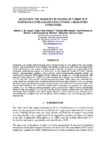Use este identificador para citar ou linkar para este item:
http://www.alice.cnptia.embrapa.br/alice/handle/doc/979670Registro completo de metadados
| Campo DC | Valor | Idioma |
|---|---|---|
| dc.contributor.author | CASTRO, R. C. de | pt_BR |
| dc.contributor.author | BENITES, V. de M. | pt_BR |
| dc.contributor.author | TEIXEIRA, P. C. | pt_BR |
| dc.contributor.author | OLIVEIRA, D. F. de | pt_BR |
| dc.contributor.author | OLIVEIRA, L. F. de | pt_BR |
| dc.contributor.author | ANJOS, M. J. dos | pt_BR |
| dc.date.accessioned | 2014-02-12T11:11:11Z | pt_BR |
| dc.date.available | 2014-02-12T11:11:11Z | pt_BR |
| dc.date.created | 2014-02-12 | pt_BR |
| dc.date.issued | 2013 | pt_BR |
| dc.identifier.citation | In: INTERNATIONAL NUCLEAR ATLANTIC CONFERENCE/INAC, 2013. Recife/PE. Anais... Rio de Janeiro, RJ: Associação Brasileira de Energia Nuclear, 2013. | pt_BR |
| dc.identifier.uri | http://www.alice.cnptia.embrapa.br/alice/handle/doc/979670 | pt_BR |
| dc.description | Phosphorus is an essential nutrient for plant growth. Million of tones of P are applied to the soils annually. However, only a small fraction of the P applied with fertilizers is taken up by crops in the year of application, and the effectiveness of any residual P fertilizer declines with time. To improve our understanding of the mechanisms underlying this response to P in the field, we have studied the mobility of P from 3 different fertilizes: monoammonium phosphate (MAP), polymer coated monoammonium phosphate (MAPp) and Organomineral phosphate (OMP) applied on high weathered soil samples in a Petri dish experiment. Total Reflection X-Ray Fluorescence (TXRF) was used to determine the P diffusive flux at different distances (0 - 7.5, 7.5 ? 13.5, 13.5 ? 25.5 and 25.5 ? 43 mm) from granular fertilizer. TXRF analyses were performed at the X-Ray Fluorescence Beamline D09B at Brazilian National Synchrotron Light Laboratory (LNLS), in Campinas, São Paulo, using a polychromatic beam with maximum energy of 20 keV for the excitation and an Ultra-LEGe detector with resolution of 148 eV at 5.9 keV. Besides that, the detections were performed in a high vacuum chamber (2.5 x 10-5 mbar) to avoid air absorption. After a period of five weeks, the total P concentration increased in the soil sampled 7.5 to 13.5 mm from the fertilizer showing a diffusive flux of P. About 20% (considering MAP and MAPp) of the total P applied diffused out of the central soil ring. Different sources showed differences in diffusive flux of P. Soil pH also influenced diffusive flux of P showing higher flux on lower pH soils. | pt_BR |
| dc.language.iso | por | pt_BR |
| dc.rights | openAccess | pt_BR |
| dc.title | Analyzing the mobility in granular forms of P fertilizer in brazilians soils under laboratory conditions. | pt_BR |
| dc.type | Artigo em anais e proceedings | pt_BR |
| dc.date.updated | 2015-03-31T11:11:11Z | pt_BR |
| dc.subject.nalthesaurus | phosphorus | pt_BR |
| dc.format.extent2 | 8p. | pt_BR |
| riaa.ainfo.id | 979670 | pt_BR |
| riaa.ainfo.lastupdate | 2015-03-31 | pt_BR |
| dc.contributor.institution | Robson C. de Castro, Instituto de Física Armando Dias Tavares; VINICIUS DE MELO BENITES, CNPS; PAULO CESAR TEIXEIRA, CNPS; Davi Ferreira de Oliveira, Instituto de Física Armando Dias Tavares; Luis Fernando de Oliveira, Instituto de Física Armando Dias Tavares; Marcelino José dos Anjos, Instituto de Física Armando Dias Tavares. | pt_BR |
| Aparece nas coleções: | Artigo em anais de congresso (CNPS)  | |
Arquivos associados a este item:
| Arquivo | Descrição | Tamanho | Formato | |
|---|---|---|---|---|
| ANALYSING.pdf | 182,42 kB | Adobe PDF |  Visualizar/Abrir |









